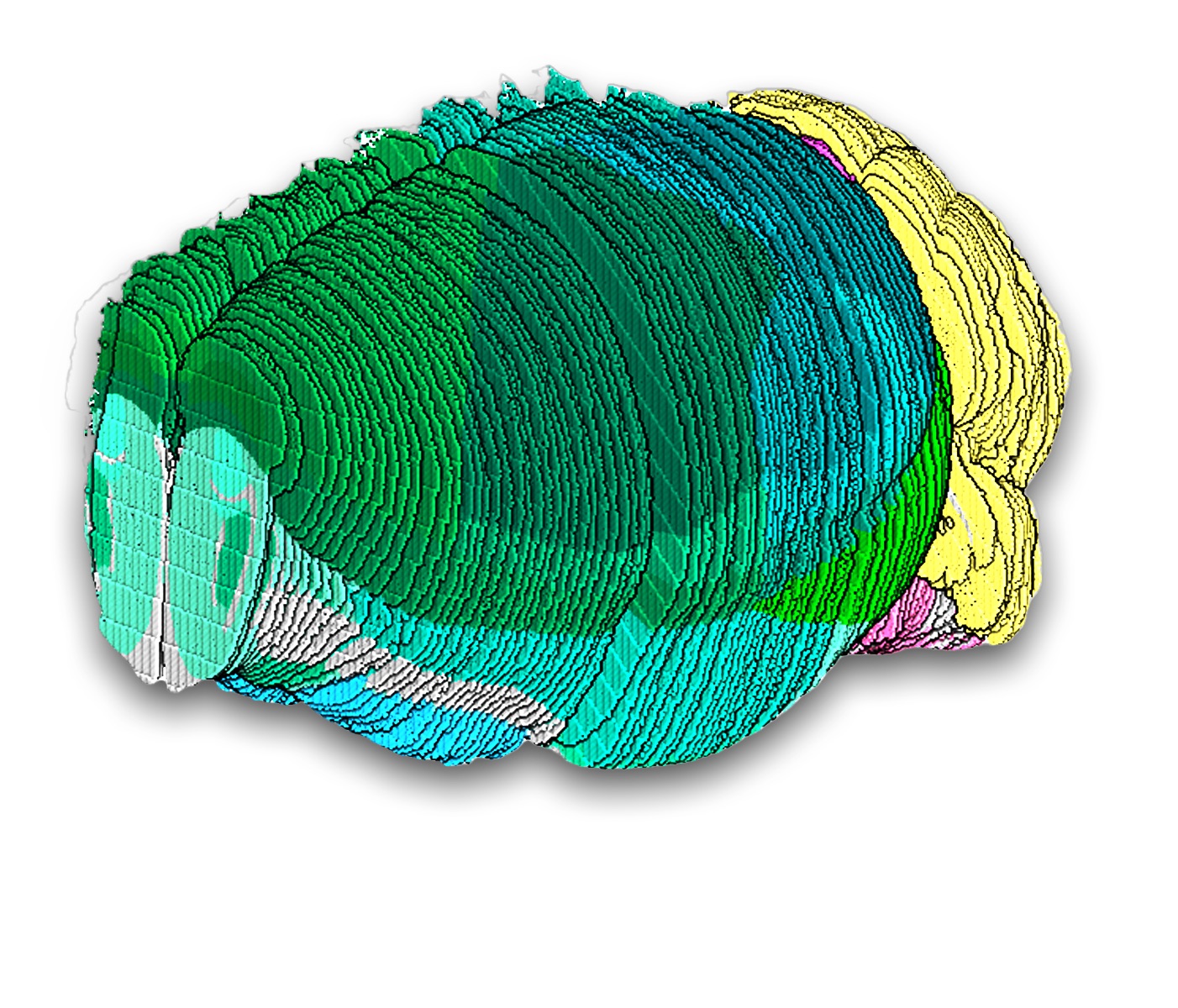Reaction: the most detailed atlas of the mouse brain is published
Nine studies published today in the journal Nature present the most comprehensive and detailed characterization of the mouse brain. The findings reveal the structure and organization of the brain, the function of individual brain cells, and neural circuits. According to the authors, these investigations serve as a tool to delve into the development and evolution of mammalian brains, and how the organization of different types of cells could contribute to neurological disorders in humans.

The researchers analyzed 101 Slide-seq slices across a single mouse brain, giving them a deep and comprehensive view of cell types across the brain. In this visualization, slices are stacked to illustrate coverage of known major regions of the mouse brain, shown in different colors for reference. Credit: Macosko and Chen labs.
Yuste - ratón
Rafael Yuste
Professor of Biological Sciences and Director of the Center for NeuroTechnology at Columbia University (New York), President of the NeuroRights Foundation and promoter of the BRAIN project
Echoing the previous articles from just a few months ago, this batch of articles is once again history. It marks another of the initial salvos in what will be a torrent of studies in the next decade, classifying, using transcriptomic techniques, all cell types in the body. Why are cell types important? The body is a very complex biological machine, composed of cells of many types. Some critics might say, not without reason, that we won't understand how any organ in the body works until we know what types of cells compose it.
In addition to the brain, there are now many groups, institutes (Broad), foundations (Chen Zuckerberg), and transnational projects (like the BRAIN initiative) involved in classifying cells, not only in the rest of the brain but throughout the entire body. It is an immense effort, but I see it as feasible. It will have a fundamental impact on science and medicine, as, at the end of the day, everything the brain or the body does happens among different cell types. Perhaps in a decade, students will learn these classifications that are now being published in the early lessons of their careers in biology or medicine.
Specifically, the works being published now map the cells of the brain. They delve into and update the monumental effort of Cajal and his disciple Rafael Lorente de No to anatomically classify neurons based on their shape and qualitative arguments. New transcriptomic and statistical techniques allow a rigorous and automated differentiation of cell types based on their molecular differences. The initial steps of this strategy have been spectacular.
This is largely the result of the BRAIN initiative, systematically mapping all cell types of the nervous system in various species. I hope no one complains anymore that BRAIN-I was a bad idea.
In this case, what I find most novel in these papers, compared to previous batches using transcriptomics of brain extracts, is that not only are the cell types of the brain mapped, but for the first time, the position of each type of neuron is mapped. This is called 'spatial transcriptomics,' using new microscopy techniques that allow transcriptomic analysis of specific positions in histological sections.
Who is responsible? These methods are being industrialized, and many laboratories are jumping on board, each university highlighting its own. But the true hero behind this is a woman: Xiaowei Zhuang from Harvard, who invented spatial transcriptomics (which she called MERFISH). Born in China, she has made her entire career in the USA. She is one of the best scientists of our generation. She was also the inventor of the first super-resolution microscopy technique (called STORM). She was unfairly left out of the 2014 Nobel Prize in Chemistry, even though she published it earlier, and STORM is also the most useful compared to the others that received the Nobel. I believe she deserved a Nobel Prize for that and perhaps another for what has been published today, if I had to point to someone.
We have participated in this effort of the Allen Institute, which has culminated in a unified classification of cortical cells (the Copenhagen classification, named after the congress where it was proposed), proposed by experts worldwide. Having a list of all neurons can be considered a Rosetta Stone for the brain, something that would make Cajal and Lorente de No happy. Additionally, we have collaborated with Zhuang, whom I know well, and she has expressed her willingness to advise Spain Neurotech, so we might see her frequently in Madrid.
These data are not the end but the beginning of the road. They have limitations: the information is only from the soma [body] of the neurons, it is a snapshot of the genes that were active at a given moment, and it does not tell us which ones were important. Much work remains to be done. Anyway, this batch of articles is impressive. It reminds me of the Human Genome Project, which began flooding scientific journals with articles signed by dozens of scientists sequencing genomes, but with increasing precision and in more species. It is Big Science, science at an industrial level, like particle physics. Cajal and Lorente de No must be happy today.
He collaborates with Xiaowei Zhuang, one of the authors participating in the studies.
- Research article
- Peer reviewed
- Animals
